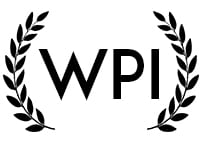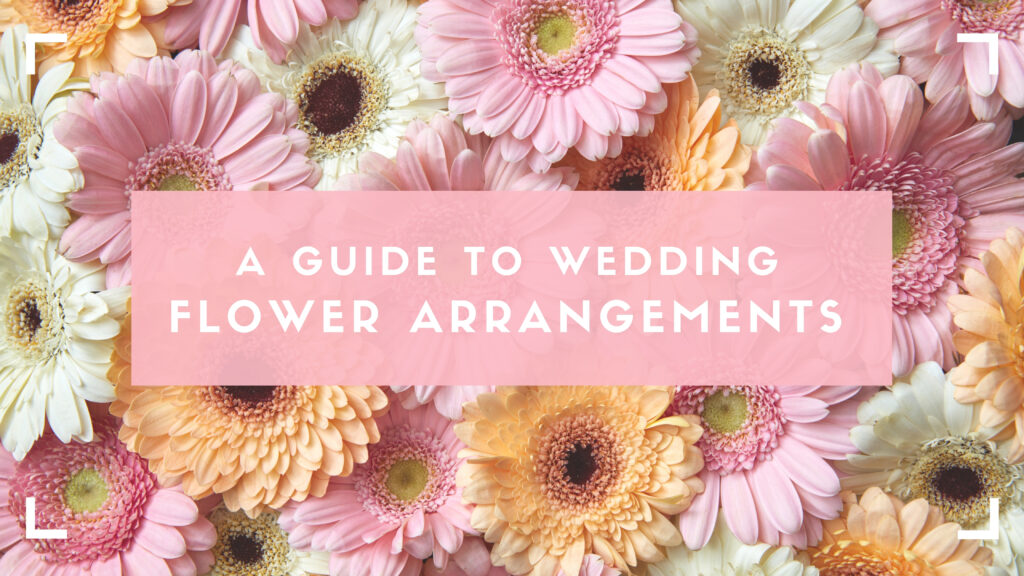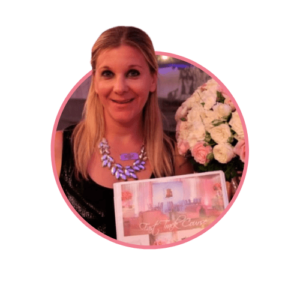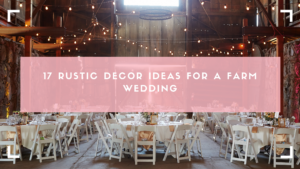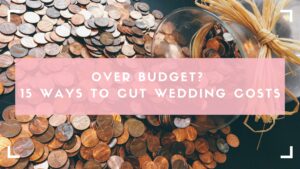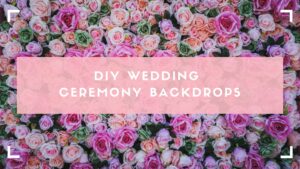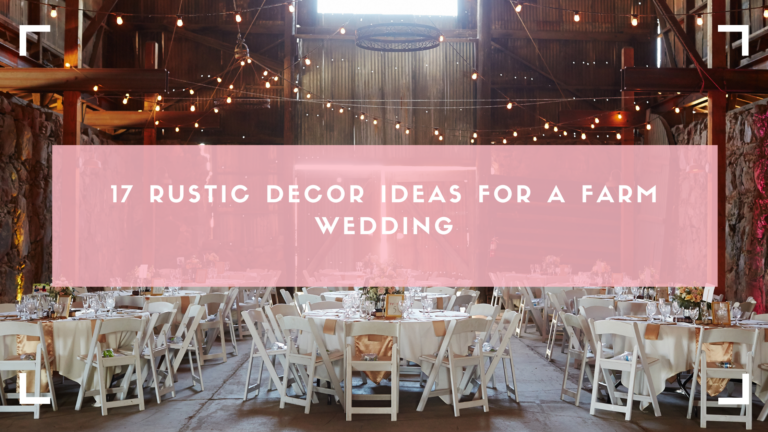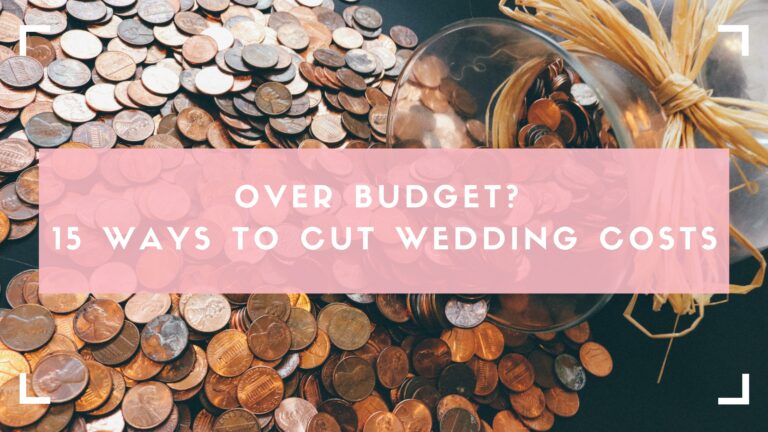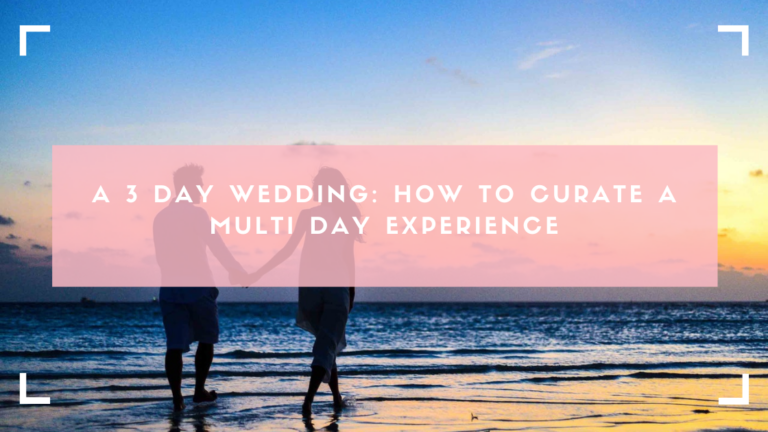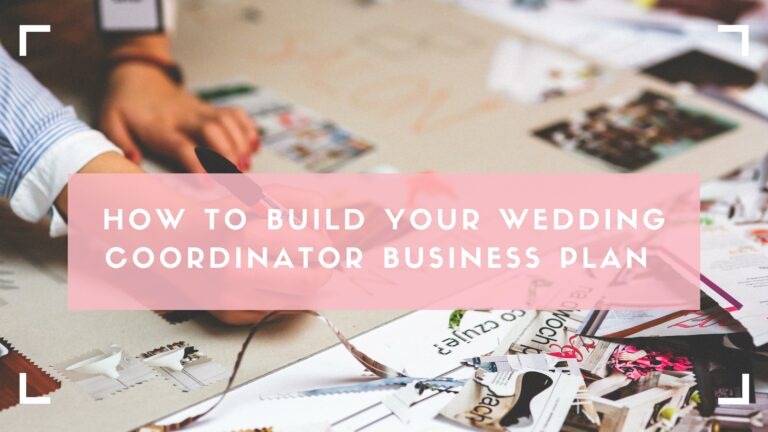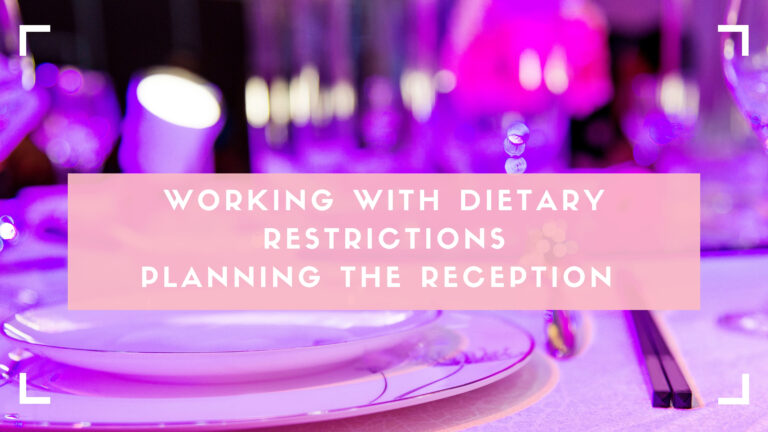Wedding flower arrangements have a long history. As far back as ancient Rome and Greece, and perhaps even longer, brides were said to carry herbs or flowers on their wedding day. Many did so as a symbolic gesture, a tradition that carried through the Middle Ages.
However, it wasn’t until the Elizabethan and Victorian era that wedding flower arrangements expanded to include décor. Today’s couples are incorporating florals throughout myriad facets of the wedding celebration.
Today, as a wedding planner, thinking about wedding flower arrangements can be overwhelming.
We’ve put together this helpful wedding flower checklist to organize all things wedding bouquets and florals.
Getting Started with Wedding Florals
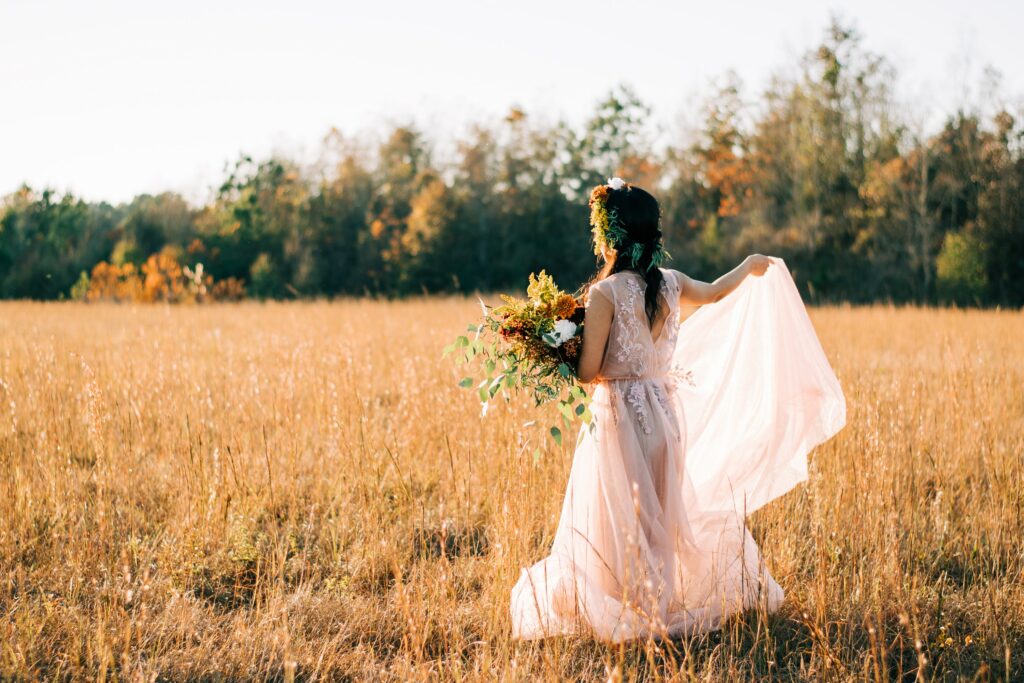
Before your clients meet with potential florists, review our checklist together so you can have a complete wedding flower list. A list will better prepare your couple as they create a wedding flower budget. On average, couples allocate between 8% and 15% of their total budget to flowers.
However, wedding flower budgets can vary greatly depending on several factors, including how many arrangements are needed and the size and type of flowers. Peonies and gardenias, for example, are typically expensive wedding flowers. Daisies, freesia, and roses are less pricey.
Quantity is also a factor. Hydrangeas aren’t particularly expensive, and they have an enormous flower head. Florists will need fewer stems for a full look – a little more bang for the buck!
According to Helena Cantwell a Wedding Planner Institute Alumni and owner of Wedding Flowers by Helen:
“The essentials for the budget conscious bride would have to be a bouquet for herself and bridesmaids plus buttonholes for the boys, that would be a standard basic package. Having said that, some brides opt to just have their bouquet and one buttonhole for the groom! There are no hard and fast rules when it comes to flowers.”
Helena Cantwell, Wedding Flowers by Helen
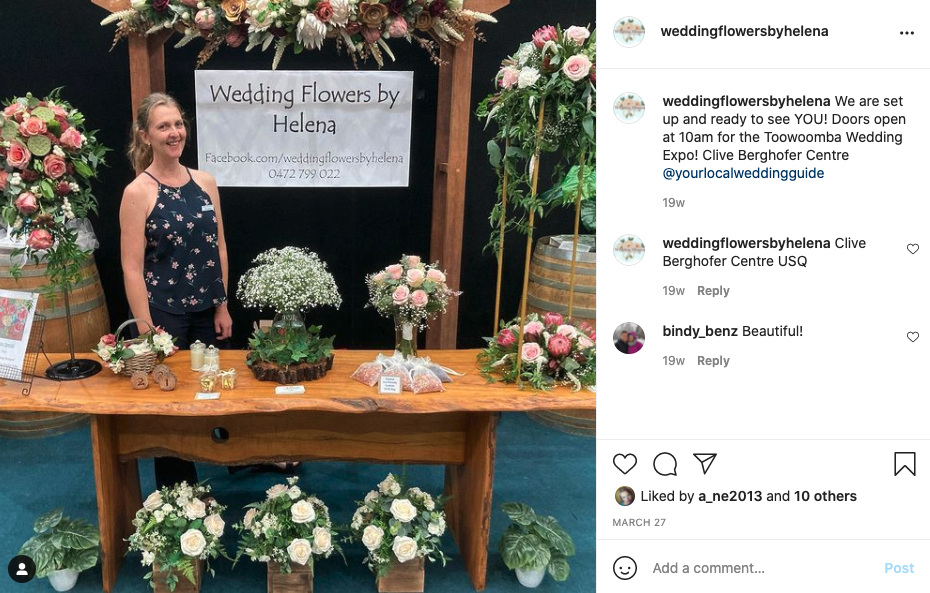
Wedding Flower Lists
To break this up into manageable chunks, lets break wedding flower arrangements can be placed in three categories:
- Ceremony flowers
- Couple/bridal party/family flowers
- Reception flowers
Ceremony Flowers
The Location and Venue Help Lay the Ground Rules
When it comes to the ceremony, the location often sets the tone and makes the rules. For example, houses of worship might have strict regulations regarding what a couple can and cannot decorate with flowers.
Religious ceremony sites may also have rules about how and when flowers must be removed following the ceremony. Start by learning from the ceremony site’s wedding coordinator what is allowed, and go from there.
The Ceremony Entryway
Many couples want to make a grand first impression with a pair of welcoming arrangements. Whether in a religious or secular space, these arrangements set the tone. They can be repurposed elsewhere during the reception.
Places for later use can include flanking a sweetheart table, near the DJ, on the cake table, gift table, or to decorate cocktail party bars.
As the wedding planner, be sure to organize the logistics of how the flowers will be transported from the ceremony to the reception.
Altar Arrangements
A pair of beautiful flower arrangements on an altar can make for a stunning backdrop in your ceremony photos. These can also be repurposed later. Find out what your clients’ church allows in advance.
Floral Arch or Chuppah
In the Jewish faith, a chuppa, a canopy under which the couple stands during their wedding ceremony, symbolizes the home they will build together. A chuppah can be as simple or elaborate as the couple wishes!
For example, a rustic wood chuppah with a simple canopy can stand alone or can be adorned with greenery. Other chuppahs are draped in cascading florals from top to bottom for a romantic vibe.
Similarly, flower arches are used to define the space where a couple will exchange vows. They are mainly seen at weddings on the beach, at wooded ceremony sites, and at venues where a ceremony site is included.
If your client is marrying at their reception venue, find out if there is a pre-existing arch on site that they can use so that all the florist needs to do is decorate it.
Some couples work with their wedding planner and florist to get creative here. Think trees, dangling crystals, billowy fabrics, oversized lanterns, terrariums, tall boxwoods, birch branches, macramé for a bohemian-modern feel, an acrylic or Perspex arch or chuppah, heirloom lace – the possibilities are endless!
The Aisle
Many couples decorate the aisle with flower arrangements or decor on pews. From small, hanging galvanized buckets or terra cotta pots full of flowers, to simple arrangements of baby’s breath or bows, marking the guest seating area is a nice touch.
Whether haphazardly spread or in an intricate design, rose petals can make a significant impact for a relatively small cost. On the grass or the sand, petals are a better alternative to an aisle runner.
Wedding Flowers for the Couple, Bridal Party, and VIPs
Bridal Bouquet
It’s the moment they’ve all been waiting for! This bouquet is the most seen on the wedding day, so carefully consider this piece. An in-person or Zoom appointment with your couple’s florist is beneficial here as your bride will want to be clear about how large or small they want the bouquet to be. Bigger isn’t always better, and you don’t want your bride getting lost behind a massive bouquet.
“Bouquets can be as varied as the brides that order them!” says Cantwell. “Different styles will be more expensive and require a lot more work to create than others. Also, the types of flowers chosen will have a massive impact on price.”
Bridesmaids Bouquets
These smaller bouquets typically coordinate with the wedding colors. Be sure to have a photo or fabric sample of the bridesmaids’ dresses for the florist so they can plan accordingly.
Another alternative is to have the bridesmaids carry a single stem bouquet. Calla lilies, peonies, dahlias, sunflowers, and hydrangea all make stunning minimalist statements.
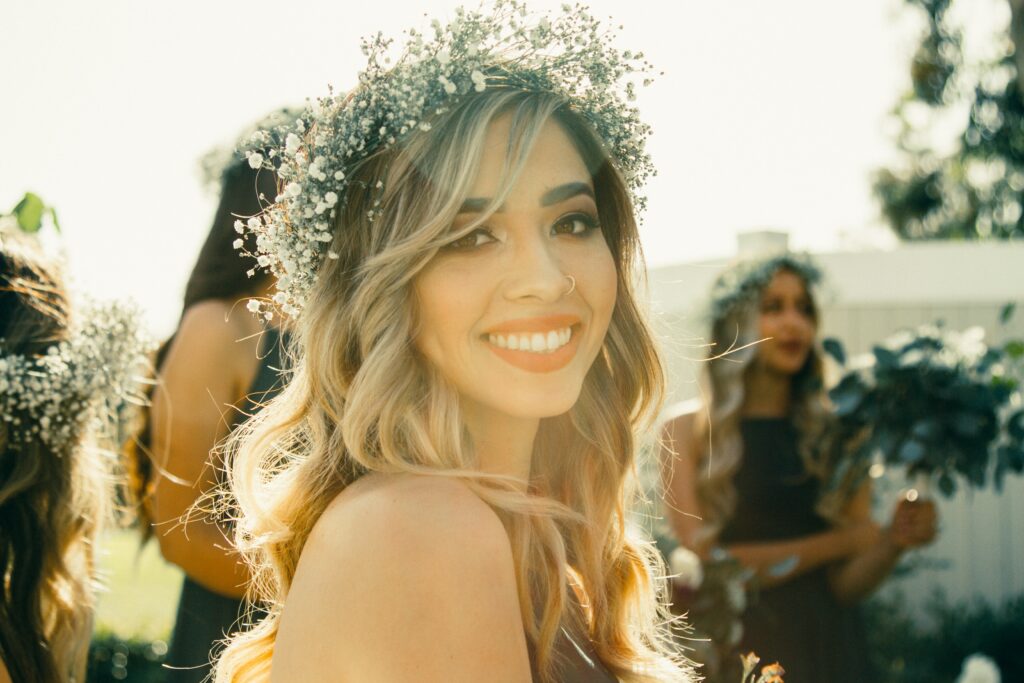
Floral Crowns
These whimsical accessories are trendy at weddings with a chic boho vibe. The bride, bridal party, and/or flower girl may want to wear a floral crown. Work with the florist to choose flowers with good staying power. No one wants wilting flowers in their hair!
Flower Girl
Flower girls can carry a small bouquet or floral pomander or can toss petals (if permitted).
Tossing Bouquet
Many brides forego the tradition of tossing the bouquet at the reception, but for those still partaking, find out from your client if they want to use their actual bouquet or if they plan to save it. If the latter, the florist can make a simple, inexpensive tossing bouquet.
Boutonnieres
The groom(s), groomsmen, and ring bearer, if having one, typically wear boutonnieres. The groom’s boutonniere does not need to be distinctive from the rest. A simple flower will do, or they can consider alternative accoutrements including fiddleheads, herbs, succulents, starfish, or other quirky designs.
VIPs
Many couples choose to recognize parents, grandparents, godparents, ceremony readers, and greeters, or other people exceptionally close to them, with a corsage.
Reception Flower Arrangements
Cocktail Hour
Review the floor plan with your clients and the venue. Will the cocktail hour have high tops, and if so, how many? Will there be more than one bar? A lounge-style seating area? First, identify tables that will need arrangements. Cocktail hour is an opportunity to repurpose ceremony flowers or simple bud vases will do. Candles, terrariums, or other small, simple centerpieces work, too.
More extensive arrangements from the ceremony can mark the entry of the reception venue where the couple will make their grand entrance or to dress up the bar. As a wedding planner, know the scale of these arrangements and the floor plan, to choose spaces where they won’t be in the way.
Cantwell says couples can reduce costs without eliminating arrangements by swapping out pricey flowers for affordable – and available – buds. “Research your prices and what is in season,” she advises. “Cheaper flower choices, for example, carnations instead of lisianthus, will help reduce price. Also, using a bit more filler flowers and foliage instead of so many roses or other feature flower) can have a pretty huge impact on price.”
Seating Assignment Table
You will want to display escort cards, or table assignment cards with florals these days. Decorative grasses, greenery, a boxwood wall, wildflowers, garland, eucalyptus branches, and pampas grass are all fresh ways to display seating arrangements.
Centerpieces
These are the flowers guests will spend the most time with, so your couple will want to make an impression. Don’t forget to consider the size of the table and seating style. Guests should always be able to see each other and speak comfortably across the table without contorting themselves around an arrangement. One solution is to have tall arrangements. Florists should also steer couples away from overly fragrant flowers.
Instead of table arrangements, look upward! Flower chandeliers, also called overhead floral displays, are a dramatic way to captivate your couple’s guests. These elaborate arrangements are especially popular with long dining tables and communal dining tables, suspended from above. Candle globes, crystals, and cascading greens are always a hit!
The Head Table
Here’s where that organized seating chart and floor plan come in really handy! Will the couple have a sweetheart table? A head table with the entire bridal party? The layout will determine the floral needs. Sometimes you can also put together a simple bridal bouquet, or all of the bridal party bouquets. Some couples prefer their chairs to be decked out.
Cantwell says this table is one of her favorites to decorate. “I love to create a flowing piece for in front of the bride and groom. It gives a beautiful photo prop and hides all the messy dishes for the photo!”
Cake Table or Dessert Bar
Fresh flowers are a popular way to make a simple cake an eye-catcher. Be sure to inform your florist if they’re bringing cake flowers or petals to decorate this table.
Gift Table
The gift table is the perfect place to repurpose flowers from the cocktail hour or ceremony. Another idea is to dress the table with simple greens and garlands.
Powder Room
Flowers in the ladies’ powder room are always a nice touch and show attention to detail. Consider reusing a cocktail hour arrangement or something simple.
After Party Décor
Whether hosting an aprés reception party at an on-site lounge or an off-site location, you can repurpose flowers from the reception. As a wedding planner, the logistics for transporting these are in your hands.
A Final Word on Wedding Flower Arrangements
One of the most important things for you and your clients to remember is to give adequate time for florists to prepare for the big day.
“Everything takes time! From quoting for a wedding, to ordering the flowers, caring for them when they come into our store, and then of course, actually creating the bouquets,” Cantwell says, adding that she orders flowers six to eight weeks out to give plenty of time to source what she needs.
There are so many ways to incorporate beautiful flowers into your clients’ big day. Helping them create a vision, and a wedding flower list based on their specific ceremony, cocktail hour, and reception spaces, will take the design scheme to the next level.
